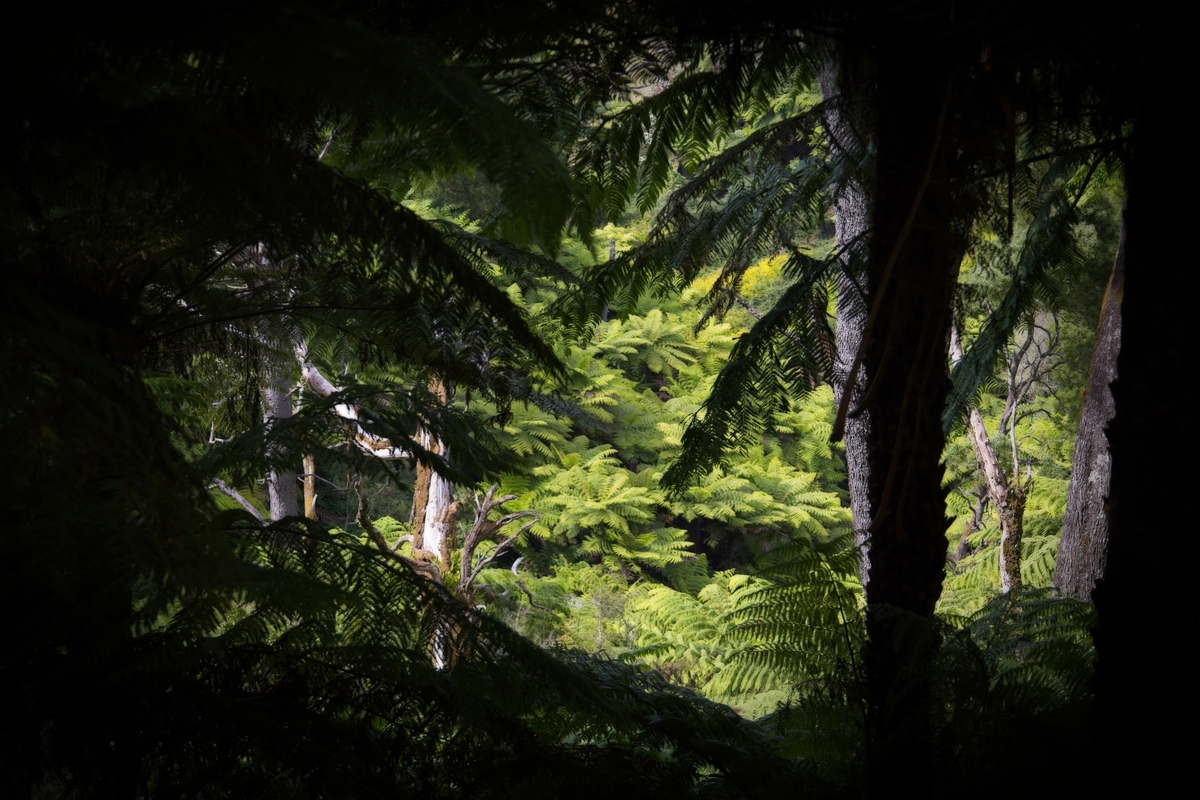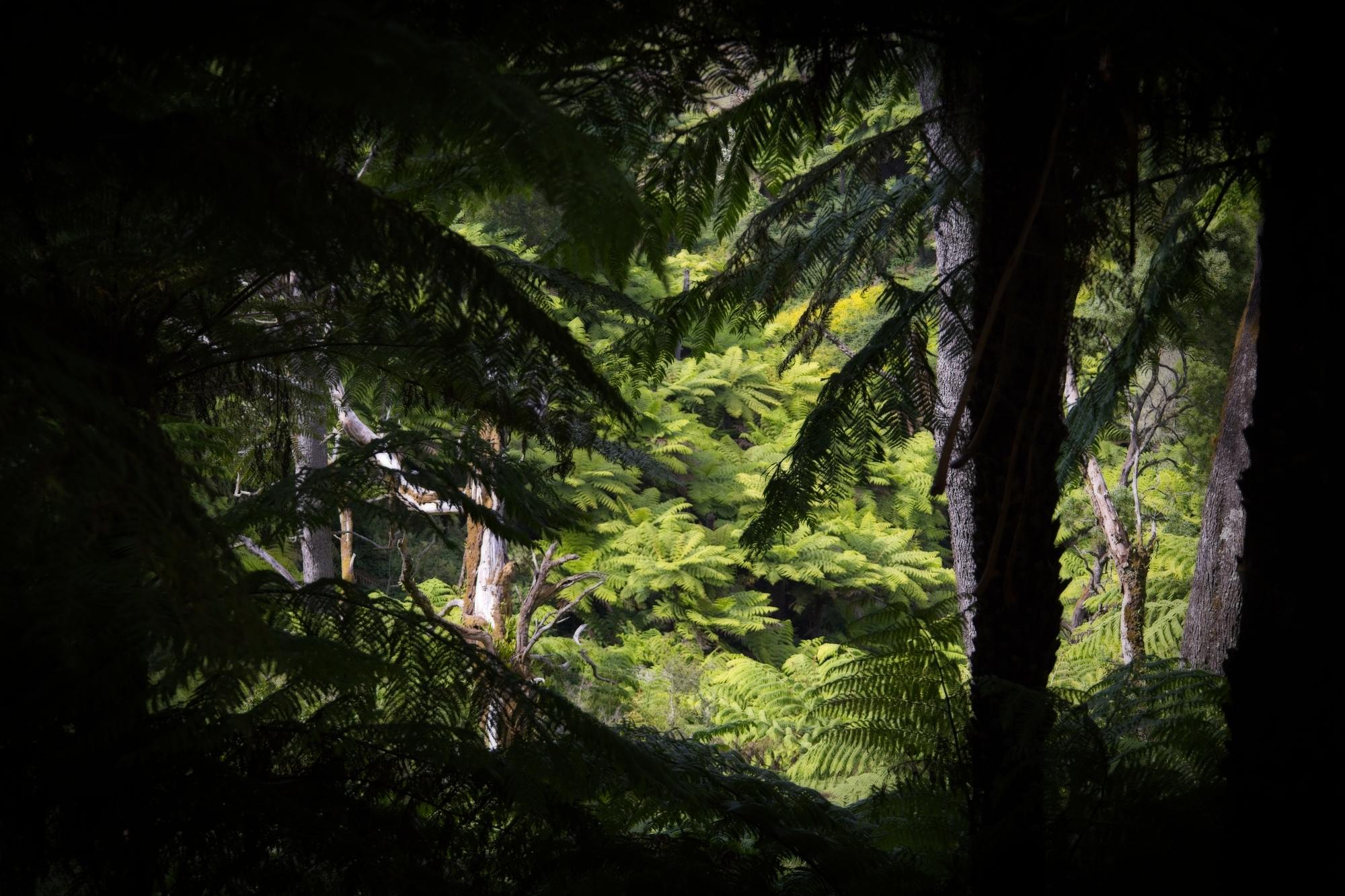
An ecological survey of rainforest communities on three Trust for Nature properties north of Foster in South Gippsland, as well as an adjacent state-run reserve, has found the largest population of Slender Tree-ferns ever documented in Australia, as well as rare and endangered species, including the Netted Brake fern, Butterfly Orchid, over 100 indigenous plants and 40 mosses.
The survey, initiated by the Gippsland Threatened Species Action Group (GTSAG) and Tarwin River Forest Land Stewards, Victoria Johnson and Stuart Inchley (BioDiversity Legacy South Gippsland biolink coordinator), was conducted by two of Victoria’s most experienced ecologists and botanists, Karl Just and Dylan Osler, with funding from the Wettenhall Environmental Trust and Friends of Turtons Creek.

An engaged community
The results of the survey were presented to an audience of over 80 people at the Foster War Memorial Arts Centre, including senior members of the Shire Council, business leaders, ecologists, botanists and residents. The presentation was also recorded (see above). Karl and Dylan talked about the importance of private land in biodiversity conservation, as many areas remain under-surveyed, compared to public lands.
“Dylan and I have both been working in ecology for over 20 years,” explained Karl.
“We get to wander around Victoria studying different ecosystems … but this [project] was quite a treat for us to do because we rarely gain access to private properties … which have an important role to play in maintaining regional biodiversity.”
Diversity is strength
The team spent more than a week exploring two distinct areas – the Turtons Creek Scenic Reserve (managed by Parks Victoria) and three adjacent Trust for Nature properties.
Walking 10 km over tough terrain, including steep, wet rainforest gullies, Karl and Dylan looked for and mapped rainforest boundaries, threatened species and created a list of observed flora.
Given the high rainfall in the area, ferns grow aplenty, but it was the diversity of the fern population that surprised them.
“You almost get these mini-ecosystems, with lots of different fern species growing on trees and branches – trees on trees. It’s kind of magical,” said Karl.
Geological features of the study area, including the presence of fault lines and unique sedimentary layers, contribute to the diverse ecosystems within the rainforest.
Understanding these geological factors is essential for effective conservation planning, said Karl, as they influence vegetation patterns and habitat characteristics. He also noted how Cool Temperate Rainforest is highly sensitive to fire, with historical data indicating that it takes over 400 years for these ecosystems to recover. This long recovery period necessitates proactive fire management strategies to prevent devastating impacts on these vulnerable environments.
The survey also acknowledged the presence of invasive species such as blackberries, which can alter soil chemistry and microclimates, threatening the integrity of rainforest ecosystems. Additionally, evidence of deer populations was noted, which can contribute to vegetation degradation through browsing and trampling, necessitating ongoing management efforts.
To ensure the long-term health of Cool Temperature Rainforest, the survey recommends implementing protective buffers around rainforest areas, particularly near adjacent timber harvesting operations. Such buffers can mitigate risks from wind throw, herbicide drift, and invasive species, thereby supporting the resilience of these ecosystems.
The survey results underscore the beauty and importance of this landscape, while also raising awareness of the ongoing threats to its preservation.
